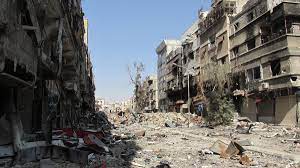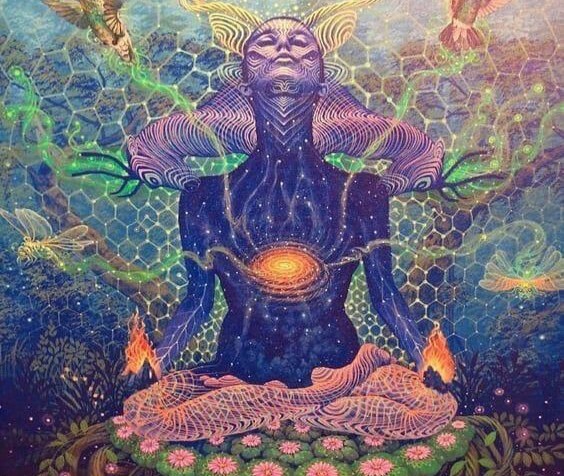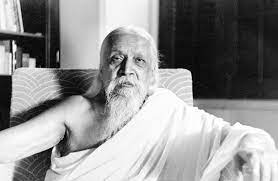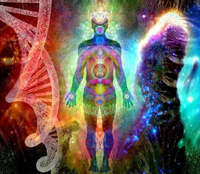Consciousness and health
Apropos destruction
Is the human being alone responsible for all destruction, even that of destruction by Nature’s fury? In a sense, man does destroy through his folly, his jealousy, his hatred, his craving for power and his idiosyncratic ideas. But when a cyclone lashes, or an earthquake quivers or a viral pandemic rages unstoppably — is it facilitated due to some corresponding destructible component in the human psyche?
Perhaps the spectre of death creates the impression that life is programmed to be destroyed. If we believe that the only and final destiny of the human being is death, we automatically acknowledge a dimension of nothingness in our being that makes us somewhat fragile. Such fragility itself would facilitate the phenomenon of destruction. And because the human being, unlike the ape, is unique for he has the cerebrum with great frontal lobes, he carries the centre of cognitive consciousness and thus it can be assumed that he carries a programmed denial of himself. The human being therefore extends his corporeal limits to incorporate a non-being or a being of nothingness and within that relation, destruction becomes a phenomenon capable of experience. In other words, the human being can experience destruction and therefore invite destruction.This is because the human being is simultaneously related to a being of destruction within the penumbra of his transcendence.
This is Sartre’s contention:
“In a sense, certainly, man is the only being by whom a destruction can be accomplished. A geological plication, a storm do not destroy — or at least they do not destroy directly; they merely modify the distribution of masses of beings…There is something else. Even this expression is improper, for to posit otherness there must be a witness who can retain the past in some manner and compare it to the present in the form of no longer. In the absence of this witness, there is a being before us as after the storm — that is all. If a cyclone can bring about the death of certain living beings, this death will be destruction only if it is experienced as such. In order for destruction to exist, there must be first a relation of man to being, i.e. a transcendence; and within the limits of this relation, it is necessary that man apprehend one being as destructible. This supposes a limiting cutting into being by a being, which…. is already a process of nihilation (1).”
What if there was a different world-view! Actually there can be many world-views, all of which represent partial truths. And Sri Aurobindo explains that the global cognitive field of the Overmind allows a plethora of partial truths to flourish so as to constitute a variegated manifestation. Thus was created the world of multiplicity, which was also Ignorance, as the unity of the manifestation representing Knowledge had to be sacrificed for uniqueness of the world-integers to flourish.
A synthesis of unity and multiplicity, of knowledge and ignorance cannot take place in the global cognitive field of the Overmind for the simple reason that a global playing-field has to support simultaneously all the unique integers in a manifestation. (The Mind-principle, which is a derivative of the Overmind, cannot support all integers simultaneously for it is not impartial in its dealings). The synthesis can only take place in the integral cognitive field of the supreme creative consciousness of the Supermind.
In an integral world-view, all denouements change.
Firstly, the being not only can extend to a non-being of nothingness, which is all where the ego can take us to, it can also extend to a fourth-dimensional being of fulfilment and plenitude which is the soul-principle in evolution. Thus the phenomenal being in time and space is supported by a noumenal being poised in infinity and eternity. If destruction is programmed in the phenomenal world, the immortality of consciousness is also programmed in the trans-phenomenal perspective. In other words, if there is a perceived non-being that heralds destruction; there is a metaphysical Non-Being who is termed such as it surpasses our cognitive grasp but is actually the Spirit who simultaneously holds the Transcendental, Universal and Individual poises of Reality.
Moreover, destruction per se is not merely the opposite of creation and survival. On the contrary, it is incorporated in the very programme of creation. It is perpetual destruction that assures a perpetual renewal of forms. Sri Aurobindo views death not as a denial of life but as a process of Life, “…. death is necessary because the eternal change of form is the sole immortality to which the finite living substance can aspire and eternal change of experience the sole infinity to which the finite mind involved in living body can attain (2).”
And can the witness be an extra-corporeal being or even a temporal being? The actual witness is the unchanging Spirit or Jivatman that supports the soul-element in evolution through itself, behind the manifestation, supporting and upholding it. If Sartre contends that it is not feasible to have a witness in the flux of Time, he is not wrong. For the witness has to be poised in timelessness — it is that which withstands aeonic vicissitudes and raises us from “the yoke imposed by birth in Time (3).”
And finally the human being is not merely a trans-phenomenal being in the sense that behind the phenomenon of the apparent being is the Freudian unconscious being and the Sartre’s destructible being of nothingness and the metaphysical conception of the soul; man is, in Aurobindonian terms, also a transitional being, “Man is not final, he is a transitional being. Beyond him awaits formation of the diviner race, the superman (4).”
The universe awaits a gradually unfolding harmony that can only be achieved after all destructive potentials have been exhausted.
“The term of our destiny is already known to us; we have to grow from what we are into a more luminous existence, from pleasure and pain into a purer and vaster and deeper bliss, from our struggling knowledge and ignorance into a spontaneous and boundless light of consciousness, from our fumbling strength and weakness into a sure and all-understanding Power, from division and ego into universality and unity (5).”
Sartre relates the destruction in nature to the inherent destructibility in human life. But nature also includes our ego-bound surface personality. Indian metaphysics has always described a lower nature where the ego reigns and death triumphs as well as a Higher Nature that transcends the ego and is intrinsically indestructible, for it is aligned with infinity and eternity. When Sartre talks about the destructible element in human beings, he actually refers to the ego-bound lower nature where war and strife exist as self-destructible human elements and physical nature too offers resistances to the Higher Forces resulting in catastrophes. When Sri Aurobindo talks about the Supramental creation, he refers to the gnostic Higher Nature where newer elements of consciousness are perpetually constructed and destruction as a phenomenon disappears altogether.
References
1. Sartre J-P. Being and Nothingness — Phenomenological Essay on Ontology, (translated by Barnes HE). New York: Washington Square Press; 1992, p. 39.
2. Sri Aurobindo. The Complete Works of Sri Aurobindo, Volume 21. Pondicherry: Sri Aurobindo Ashram Trust; 2005, p. 206.
3. Sri Aurobindo. CWSA, Volume 33; 1997. p. 12.
4. Sri Aurobindo. CWSA, Volume 12; 1997, p. 221.
5. Ibid.,p. 228.
Share with us (Comments, contributions, opinions)
When reproducing this feature, please credit NAMAH, and give the byline. Please send us cuttings.




